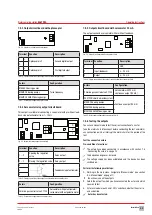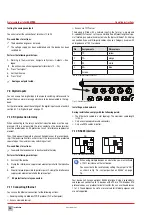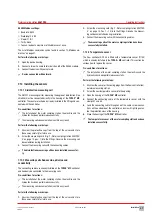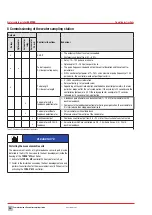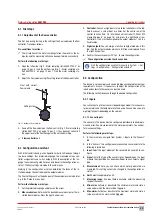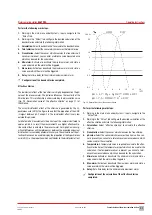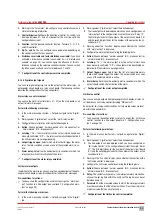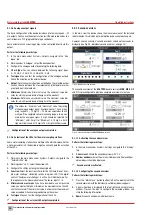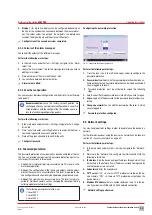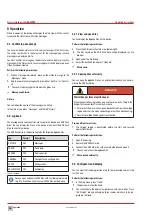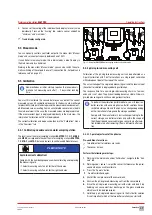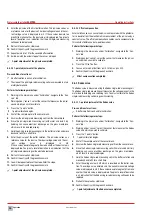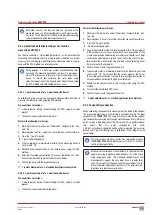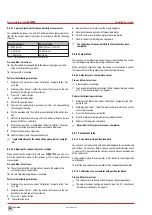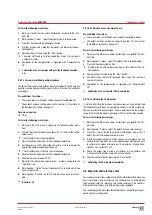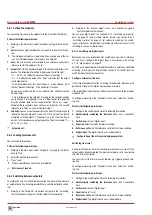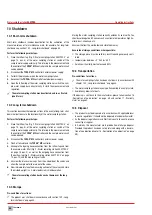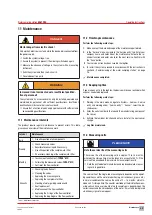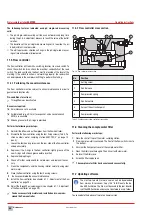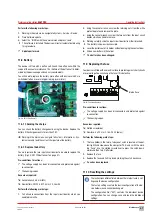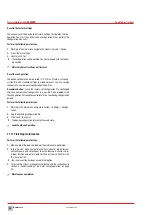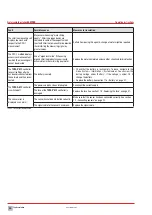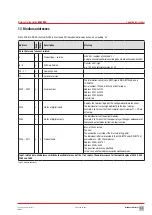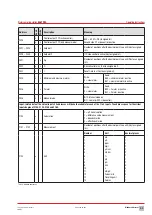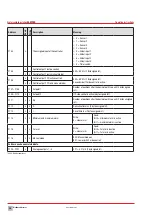
Operation
39
Subject to technical changes.
200114
BA-42820-02-V03
Water sampling station
EASYPRO
Operating instructions
i
With older sensors, the reaction time can increase or the
measured value can differ considerably from the buffer solu-
tion value. This indicates that the Redox single-rod measuring
cell must be checked and replaced if necessary.
9.5.4 3-Electrode potentiostat and excess chlorine
measuring cell CS120
You should calibrate a 3-electrode potentiostat or the potentiostatic
measuring cells (chlorine sensors) as single-point calibration as a matter
of course. You will require a photometrically measured value in accord-
ance with the DPD method as a reference value.
i
With operation in a hot water system, electrochemical pro-
cesses on the measuring electrode can result in a displace-
ment of the zero point. In this case, 2-point calibration is nec-
essary in which you calibrate the zero point using
chlorine-free hot water. The second point is determined using
the DPD method with chlorinated water as usual.
9.5.4.1 1-point adjustment of a 3-electrode potentiostat
To calibrate chlorine sensors, you will require a photometer with which to
measure the reference value using the DPD method.
Pre-conditions for actions:
ü
A measurement device for determining the DPD value is already
present.
ü
The sensor is operated with sample water.
Perform the following work steps:
1.
Working in the main menu under “Calibration”, navigate to the “Sen-
sors” tab.
2.
Working under “Sensor”, select the sensor that you wish to calibrate.
3.
Press the “1 points” button.
4
1-point calibration begins.
4.
Take sample water in immediate proximity to the measuring cell and
confirm with “OK”.
5.
Determine the concentration in the sample water using the DPD
method.
6.
Enter the measured concentration. This serves the device as a refer-
ence value with which to permit correct measurement.
7.
Confirm the entry with the green checkmark.
ü
1-point adjustment of a 3-electrode potentiostat completed.
9.5.4.2 2-point adjustment of a 3-electrode potentiostat
Pre-conditions for actions:
ü
A measurement device for determining the DPD value is already
present.
ü
The sensor is operated with sample water.
Perform the following work steps:
1.
Working in the main menu under “Calibration”, navigate to the “Sen-
sors” tab.
2.
Working under “Sensor”, select the sensor that you wish to calibrate.
3.
Press the “2 points” button.
4
2-point calibration begins.
4.
You will be asked to set the first reference value; this is the zero point.
If the zero point was mal-set by accident, set it by pinching off the
measuring electrode and entering a value of zero. Should real 2-point
calibration be performed, e.g. due to hot water, you must first per-
form calibration with chlorine-free and then with chlorinated water.
Enter a value for the zero point.
5.
Confirm the entry with the green checkmark.
6.
Take sample water in immediate proximity to the measuring cell and
confirm with “OK”. This means that the current signal at the time of
the sample water extraction is saved to rule out signal fluctuation as
a measurement error during the DPD ascertainment.
7.
Determine the concentration in the sample water using the DPD
method.
8.
First enter the determined DPD value.
9.
Confirm the entry with the green checkmark.
ü
2-point adjustment of a 3-electrode potentiostat completed.
9.5.5 Conductivity conductive
When calibrating the conductivity measurement, the slope of the conduc-
tive measuring electrode is ascertained in combination with the input
amplifier of the
TOPAX
®
MC
. The value (mA) measured with the conduc-
tive conductivity measuring cell is assigned to the conductivity (mS/cm or
µS/cm), which is then displayed in the main menu. This is performed over
two points; the first point corresponds with 0
mA;
0 mS/cm is electrically stipulated and no action is required. The usual ap-
proach uses 1-point calibration, but a calibration in the setpoint is also
conceivable.
i
The unit is always mS/cm or µS/cm. Due to grounds of space,
the
TOPAX
®
MC
partially displays only mS or µS; % salt con-
tent is a further possibility.
i
Given correct calibration, measurements in the medium and
upper measuring range have a deviation of ±1 % of the meas-
uring range final value. The electronic design means that
measurements against the zero point have a greater toler-
ance. This means that the conductivity measurement is suita-
ble for tap water applications but not for ultra pure water ap-
plications (e.g. reverse osmosis units).

